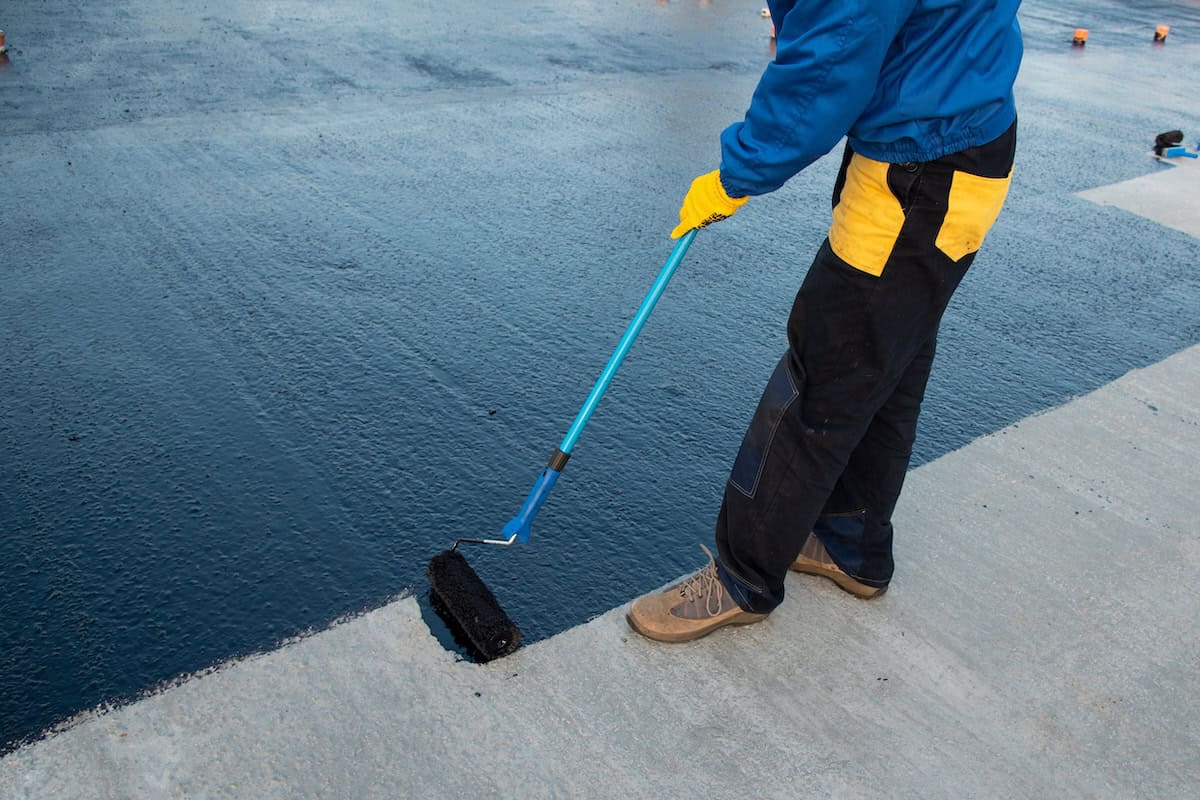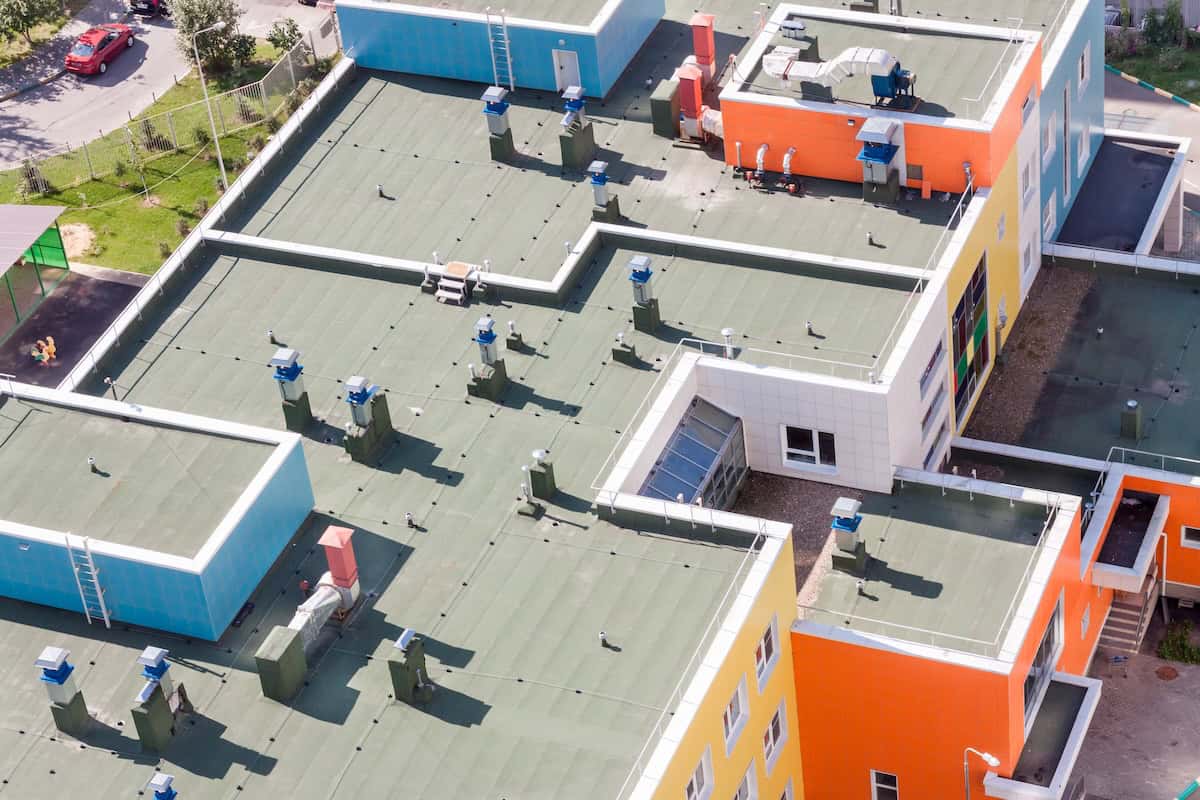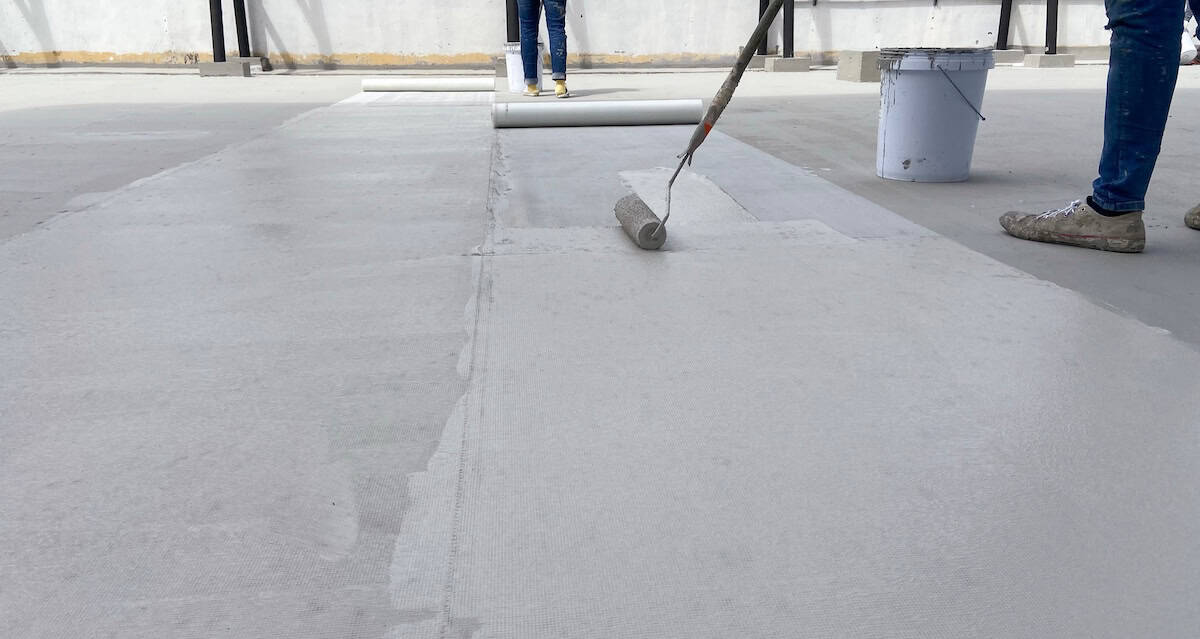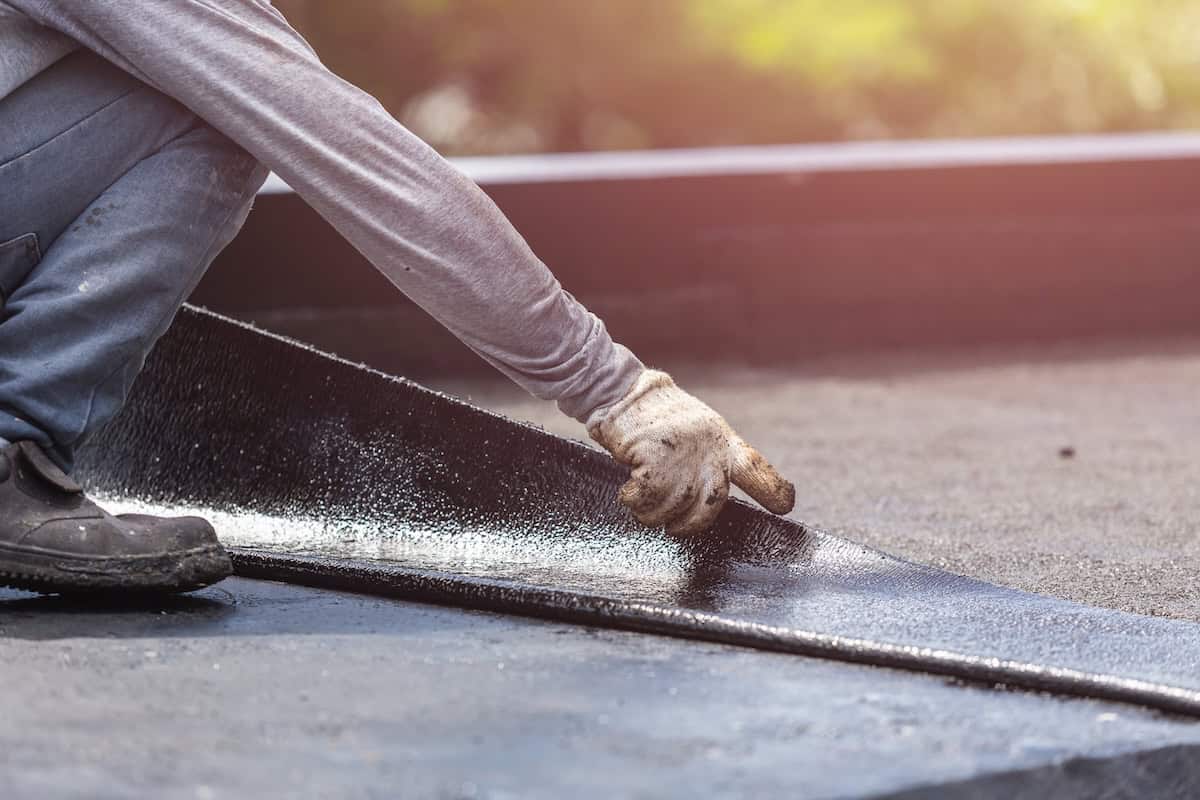When it comes to protecting your building, ensuring that your roof is in top condition is non-negotiable. One crucial aspect of maintaining your roof is roof waterproofing. Water may seem harmless, but over time, leaks and moisture can cause significant damage, leading to mold, structural issues, and an overall decrease in property value.
Understanding roof waterproofing and how it works can help you make informed decisions about maintenance. Here’s what this blog will cover:
- What exactly is roof waterproofing and why it’s important.
- How roof waterproofing protects specific roof types, including flat roofs.
- The step-by-step process for achieving a watertight seal.
By the end, you’ll understand how roof waterproofing works and why it’s an absolute must.
What is Roof Waterproofing?
Roof waterproofing is the process of creating a watertight seal on your roof to prevent water ingress and protect against damage. It commonly involves applying a specialized coating or using waterproofing materials designed to keep water from penetrating the roof surface.
Its purpose is simple but essential—to ensure that your roof can withstand rain, snow, and moisture, regardless of the weather conditions outside. Without effective waterproofing, your roof becomes vulnerable to leaks, which can lead to costly repairs or even long-term structural damage.

Why Roof Waterproofing is Important
- 💧 Prevents Leaks: Waterproofing creates a durable barrier that keeps water out, ensuring small cracks and irregularities on your roof surface don’t escalate into major leaks.
- ⏰ Extends Lifetime of Your Roof: Materials like waterproof coatings protect against weather wear, meaning your roof can endure harsh conditions (like heavy rain or UV exposure) for a longer period.
- 💵 Reduces Maintenance Costs: Waterproofing helps avoid expensive water damage repair by addressing vulnerabilities before they become significant issues.
Now that you understand the basics, let’s get into how roof waterproofing applies to different roof types and how it works step by step.
Understanding Roof Waterproofing for Flat Roofs
Flat roofs pose unique challenges because their design doesn’t allow water to naturally run off as easily as sloped roofs. Standing water on flat roofs can lead to leaks, structural issues, and more. That’s why waterproofing is even more critical for this style of roof.
Common Waterproofing Materials for Flat Roofs
For flat roofs, specific waterproofing materials are often used to ensure water protection, including:
- EPDM (Ethylene Propylene Diene Monomer): A popular rubber membrane option that delivers excellent durability and water resistance.
- TPO (Thermoplastic Polyolefin): A flexible material known for its energy efficiency and reliable waterproofing capabilities.
- Liquid Roof Coatings: These coatings are applied in liquid form, forming a seamless and watertight seal across the roof surface.
Flat roofs rely heavily on these materials because they create a barrier that prevents water from pooling and seeping through, ensuring long-term protection.

Signs Your Flat Roof Needs Waterproofing
Flat roofs often show visible signs that waterproofing is overdue. Keep an eye out for these red flags:
- Puddles or standing water that don’t drain.
- Cracks or splits in the roof surface.
- Yellowing or water stains visible on interior ceilings.
If you notice any of these signs, it’s time to have your roof evaluated for roof waterproofing solutions.
How Roof Waterproofing Works
Step 1: Inspecting the Roof Surface
Before beginning the waterproofing process, a thorough inspection of your roof is necessary to detect any vulnerabilities. This includes identifying damaged areas, cracks, or weaknesses in materials.
Step 2: Preparing the Roof
Once issues are identified, the roof surface is cleaned and prepped to ensure a smooth application process. This may include clearing away dirt, debris, and old coatings to create an even and clean surface.
Step 3: Types of Waterproofing Techniques
There are several methods used to waterproof a roof, depending on the structure and materials. These include:
- Liquid Coatings: A liquid waterproofing material is applied to the roof surface, creating a seamless watertight layer. This method is highly effective for both flat and sloped roofs.
- Membrane Systems: Rubber or synthetic membrane sheets are laid and secured over the roof surface. Ideal for flat roofs, this method provides excellent durability.
- Bituminous Waterproofing: A tried-and-tested waterproofing method, bituminous-based materials are known for their adhesion and flexibility.
- Polyurethane Waterproofing: Popular in residential applications, polyurethane is praised for its durability and resistance to UV rays.
Step 4: Applying the Waterproofing Material
Once the technique is chosen, the waterproofing material is carefully applied. This is a meticulous process, ensuring that every inch of the roof surface is sealed properly.
Step 5: Allowing for Curing Time
Some materials, such as liquid coatings, require curing time to achieve a solid watertight seal. This step cannot be rushed, as it ensures long-term effectiveness.
Step 6: Performing Final Inspections
After the waterproofing material has been applied and cured, the roof is inspected one final time to confirm the seal is secure and that all problem areas have been addressed.

Maintenance Tips for a Watertight Roof
Waterproofing your roof doesn’t mean those tasks are over forever. Regular maintenance is key to keeping your roof performing well:
- Inspect your roof twice a year, especially after extreme weather conditions.
- Clear debris and ensure drainage systems are functioning to prevent standing water.
- Reapply coatings or refresh membranes as recommended to extend the life of your waterproofing materials.
Proactive care ensures that your watertight seal lasts and prevents avoidable damage.
Why Choose Walsh Roofing for Your Roof Waterproofing Needs?
At Walsh Roofing, we understand that your building’s roof is its primary defense against the elements. With years of experience in roof waterproofing and working on various roof types (including flat roofs), we’re proud to provide dependable solutions using the best waterproofing materials available.
Here’s why owners trust us:
- Expert Knowledge: Our team stays up-to-date on the latest waterproofing techniques and materials.
- Comprehensive Inspections: We thoroughly assess every roof we work on to ensure long-lasting results.
- Customer-Centric Approach: At Walsh Roofing, your satisfaction is our priority. We tailor our services to your roof’s unique needs.
Protect your investment with a roof that stands the test of time. Contact Walsh Roofing today to help with your roofing needs!

